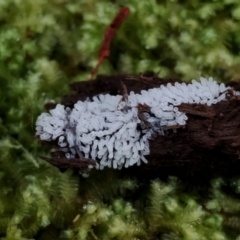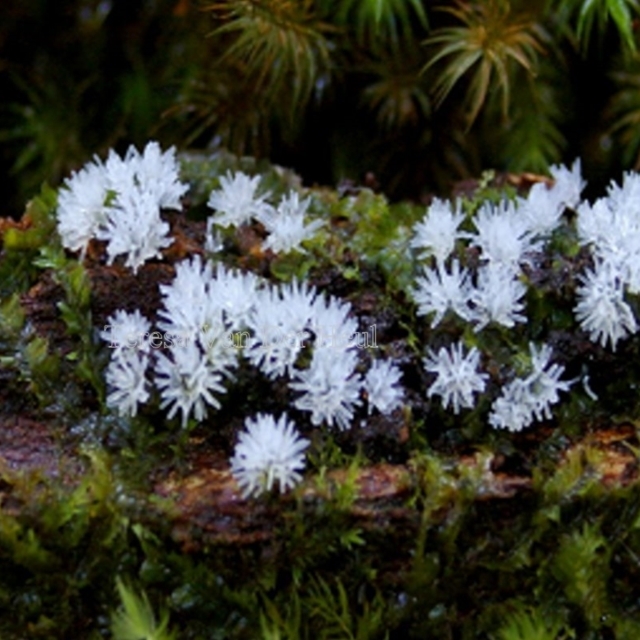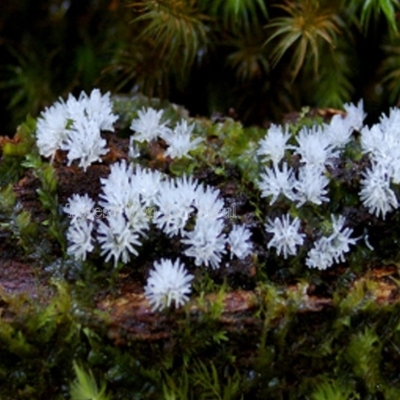Ceratiomyxa fruticulosa (Coral Slime)
Order Ceratiomyxales, which belongs to subclass Ceratiomyxomycetidae, whose main characteristic is the fact that it produces spores external to the sporophore, differing from all other orders of myxomycetes, which form their spores inside the sporophores,
The genus currently has 10 species and can be found in all continents. mainly in the tropical and subtropical regions of both hemispheres. These species grow preferentially in shady, humid forest environments, almost always with behaving as lignicolous and sporulating on wood in different levels of decay and C. sphaerosperma has been found in herbaceous leaf litter.
Most common species in Australia are Ceratiomyxa fruticulosa, C. morchella and C. sphaerosperm.
Sporophores 1-5 mm in total height, sessile or rising from the substrate in branched columns, milky white, rarely creamy yellow.
Ellipsoid or subglobose spores, hyaline, smooth 5.0-9.0 µm in diameter when subglobose or 5.1-14.0 µm when ellipsoid, individually attached to a fingerlike stalk that is uniform in length along the sporophore.
Dimensions: Individual fruit bodies are 0.5-1 mm wide and 1-10 mm high. Great numbers consisting of a series of erect, simple or branched columns taking the form of a poroid or effused crust, can occur on a log or piece of wood covering many centimeters or even a meter or more.
Description: The tiny, erect, branched or simple structures of this organism look like ice crystals or tiny pieces of erect coral. They have tiny erect, branching or individual translucent white structures with a fuzzy appearance because they produce their spores on their outside surfaces.
Spores: Attached individually by thread like stalks, White in mass, hyaline by transmitted light, smooth, ovoid or elliptical 6-7 x 10-13 µm in diameter.
Plasmodium: Watery and translucent.
Comments: While not fungi, slime molds often form spore-bearing structures that resemble those of the true fungi. Although many slime mold species fruit on wood they do not form a penetrating and absorptive mass of hyphae in the wood substrate. Rather, slime molds form structures called plasmodia which are naked (i.e., without cell walls) masses of protoplasm which can move and engulf particles of food in an amoeboid manner. Slime mold plasmodia creep about over the surfaces of materials, engulfing bacteria, spores of fungi and plants, protozoa, and particles of nonliving organic matter. At some point, plasmodia convert into spore-bearing structures. In Ceratiomyxa fruticulosa, the plasmodium converts into a clustered mass of stalks bearing spores on their surfaces.
Ceratiomyxa fruticulosa is listed in the following regions:
Canberra & Southern Tablelands | South Coast
Species information
- Ceratiomyxa fruticulosa Scientific name
- Coral Slime Common name
- Not Sensitive
- Cosmopolitan
- Non-invasive or negligible
- Up to 1259.2m Recorded at altitude
- Machine learning




















